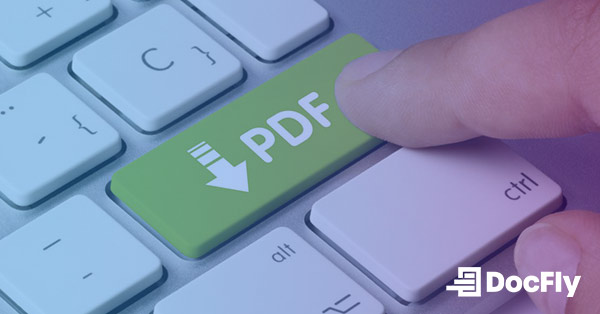Paperless Office Software For Your Small Business: Essential Tools
Almost every business is looking to go paperless these days. Thanks to the rise of remote working and the need to work more efficiently, businesses need to adapt. This digital transformation process is easier than ever thanks to many great online tools. Today, even a small business can make the change without spending a lot of money. The benefits of going paperless and a list of free or low-cost tools are listed below.
Table of Contents
What is a Paperless Office?
The paperless office is one that does not use any paper and has fully digitized processes. The idea has been around for many decades, but has only become reality in the past few years. This is mostly thanks to the rise of remote working, better tools, and an increased acceptance of electronic alternatives to paper.
While the “dream” of a fully paperless office may be unlikely as some processes may still require use of paper-based forms (for example: government tax returns in specific countries), businesses can at least seek to use less paper.
There are many benefits to going paperless. Perhaps the best benefit is that it allows you organization to become more resilient. Prior to the pandemic, businesses that invested in digital solutions fared better than those still relying on physical documents. Beyond the sudden shock of dealing with a mostly remote workforce, going paperless also helps with document version control, confidentiality and security, accessibility, as well as overall organizational productivity.
Benefits of going paperless
Version control
Is this the most recent version of the document? This is a common problem for any team working collaboratively on a document. For paper documents that need to be edited (think legal contracts), the problem can get out of hand quickly. This is also true when working with tools like regular word processors. Almost everyone has seen a document with file names such as “v12 final final.docx”.
Thankfully, this is an easy problem to solve. By storing documents and collaborating in the cloud, only a single file (the most updated version) can be seen by all. Many tools also allow you to restore the file to a previous point in time, if necessary. This eliminates the problem of maintaining multiple versions of the same document.
Security
Paper-based documents are easily forged, destroyed, or misplaced. Digital documents, on the other hand, can be subject to security measures such as audit trails and restricted access. This means that one can see exactly what changes were made to any document, while using tools such as password-protected viewing to maintain confidentiality. While digital documents (especially those requiring a signature) were initially considered to be a security risk, they are widely accepted in most countries today.
At DocFly, our service already incorporates many measures to protect documents. For example, a file can only be accessed by a user who created it. No other users can access the file, unless it is explicitly shared.
Accessibility
A study by McKinsey showed that the average employee spends 9.3 hours a week (or 20% of their total time!) searching for information. This is a waste of time that could be better spent on more valuable tasks.
For paper files, searching for information is particularly slow as documents must be read manually. Even for digital documents, it is unlikely they can be easily found unless they are searchable. Consider, for example, the large number of files stored as scanned PDFs. Replacing existing documents with accessible files that can be easily found should be a goal for any paperless office.
Productivity
Beyond reduced time spent on searching for information, the paperless office also helps productivity. This is because digital documents help employees collaborate by sharing information in real-time. While collaboration historically occurred in silos, such as within an office in a specific city, this is now possible from anywhere.
Free or low-cost tools for the paperless office
What is especially exciting, for small businesses, is that many modern tools are either free or very low cost. Here are some of our favorite tools to help you make the change. Our list contains tools that are both free/low-cost and relatively easier to use based on customer reviews.
DocFly
No paperless office is complete without DocFly (we are slightly biased of course). DocFly is an online PDF editing service that allows you to create, convert and edit your PDF files (the most common file format for digital files). It also allows you to fill out or create PDF forms.
Best of all, the product is free for up to 3 files per month. Many of our customers include small businesses looking to make the transition to the paperless office.
Dropbox
DropBox, with over 700 million registered users, is one of the largest online file sharing services. Once a file is saved in DropBox, it is then automatically available across all your devices and can be easily shared with others. The service also allows you to see analytics around shared documents (e.g. open rates for documents shared with clients).
DropBox Basic, the service’s free tier, allows you to store up to 2GB of storage at no cost.
Zoom
Zoom is an online videoconferencing service. The company enjoyed tremendous success at the outset of the COVID-19 pandemic and continues to be the leading videoconferencing service. Prior to 2020, most online videoconferencing services were both expensive and suffered from technology problems relating to streaming real-time video. The service includes high-resolution video calls, and can bypass a lot of issues relating to slow internet.
Zoom offers a very generous free tier (up to 40 minutes per meeting, with up to 100 attendees) and more importantly, is simple to use.
Titan
Titan provides email software for businesses that help them manage their customer relationships to a greater degree. One can think of Titan as a business email service that incorporates aspects of customer relationship management (CRM) software and email marketing software.
While the product is not free, it is reasonably priced at $2/month per user.

Emily Shaw is the founder of DocFly. As a software developer, she built the service from scratch and is responsible for its operations and continued growth. Previously, she studied engineering at the University of Hong Kong and mathematics at the University of Manchester.
Loved what you just read? Share it!



